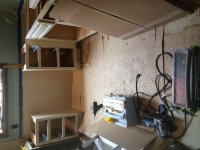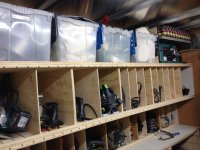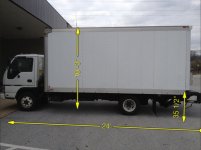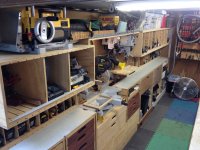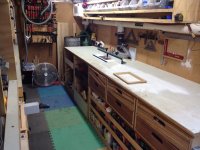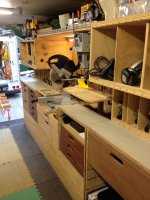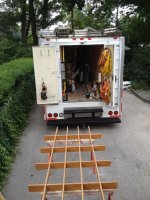Kevin Stricker
Member
- Joined
- Feb 6, 2009
- Messages
- 481
I have been using Festools on site for over 5 years, and am only now finally adopting the system whole heartedly. For some reason I always thought I knew better than Festool did, not to mention being a "smarter" consumer. I focused on value and stubbornly held onto the belief that it was smarter to diversify. Although I had accumulated quite a nice selection of Festools I still had not integrated my site kit into a cohesive system.
This used to be OK, as I worked on my own job sites at my own pace. I could "move in" for a week or two. I built a Paulk Miter station and workbench, and would even bring a couple extractors when I could. It sure is nice to have dedicated work stations.
A couple months ago I started sub'ing full time for a busy remodeling company with 30+ jobs on the books all the time. I am usually at 2-3 different sites per week, sometimes a couple on the same day. Suddenly my "system" was failing miserably. I remember throwing a fit one afternoon after re-loading my truck a second time the same day telling myself the Systainer system was not working. Then I looked over and realized I hadn't even loaded my Systainers in my truck yet! It was everything else (Rubbermaid totes, table saw, mitersaw, CT, and of course the cables and hoses) that were a complete CF. I popped up my back seat and stacked the Systainers in a nice row in about 1 minute. Ever sense then I have been on a mission to develop the "ultimate" trim carpentry setup for my work.
For me the ultimate setup is one that lets me do the majority of my work in the most efficient manner. I am on a mission to minimize trips to the truck, and maximize my preparedness with the smallest site kit possible. I would love to hear about any other journeys into the system, as well as see pictures of your site kit. I will post some pictures of my current rolling carnival (for the laughs) and my plans for my "Ultimate" setup as well. Thanks for reading.
This used to be OK, as I worked on my own job sites at my own pace. I could "move in" for a week or two. I built a Paulk Miter station and workbench, and would even bring a couple extractors when I could. It sure is nice to have dedicated work stations.
A couple months ago I started sub'ing full time for a busy remodeling company with 30+ jobs on the books all the time. I am usually at 2-3 different sites per week, sometimes a couple on the same day. Suddenly my "system" was failing miserably. I remember throwing a fit one afternoon after re-loading my truck a second time the same day telling myself the Systainer system was not working. Then I looked over and realized I hadn't even loaded my Systainers in my truck yet! It was everything else (Rubbermaid totes, table saw, mitersaw, CT, and of course the cables and hoses) that were a complete CF. I popped up my back seat and stacked the Systainers in a nice row in about 1 minute. Ever sense then I have been on a mission to develop the "ultimate" trim carpentry setup for my work.
For me the ultimate setup is one that lets me do the majority of my work in the most efficient manner. I am on a mission to minimize trips to the truck, and maximize my preparedness with the smallest site kit possible. I would love to hear about any other journeys into the system, as well as see pictures of your site kit. I will post some pictures of my current rolling carnival (for the laughs) and my plans for my "Ultimate" setup as well. Thanks for reading.

